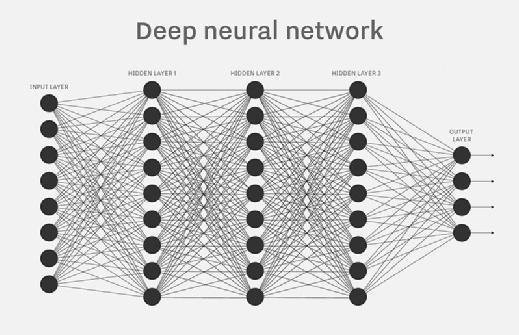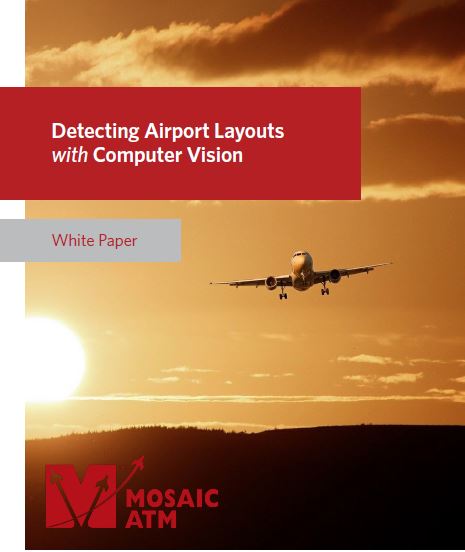Aviation Computer Vision
Computer vision is a field of artificial intelligence that trains a computer to see, identify and process images in the same way that human vision does. Data scientists can train these models to provide an appropriate output. The goal of these deep learning models is not only to see, but also process and provide useful results based on the observation. Machines can be relied on more than humans to accurately identify and classify objects, react to what they see and automate a traditionally time-consuming process.
Some of the first neural networks were developed in the 1950s and progress has been made since then to train computers in object recognition and image classification. Accuracy rates for computer vision models have risen from 50 percent to 99 percent in less than a decade thanks in large part to a number of technological advancements, popularity of mobile technology, computing power, hardware designed to handle complex deep learning models, and new algorithms available in open source libraries.
How Deep Learning Enables Machine Vision
Deep learning methods use neural network architectures to ingest data streams and output insights to a user. Seems easy right? Just implement a convolutional neural network, and you are good to go. Without understanding the mechanics behind these models, you run the risk of not understanding the outputs, not being able to tune the model or not being able to translate analytics to business terms.
Neural Network Intro
An artificial neural network (ANN) is a system patterned after the operation of neurons in the human brain. An ANN usually involves a large number of processors operating in parallel and arranged in tiers. The first tier receives the raw information, much like an optic nerve in the human eye. Each successive tier in a neural network receives the output from the tier preceding it, just like neurons in the brain receiving information from the optic nerve in the human body. The last tier of the system produces the output.
Each processing node has its own small sphere of knowledge, including what is has seen and any rules it was programmed with or developed for itself. The tiers are highly interconnected, which means, in some cases, each node is connected.

ANN’s are so powerful because they are adaptive, the machine continues to learn with each subsequent run of the model. Typically, one of these models is trained on a large training dataset, and whomever is tuning the model, needs to provide the model with answers so the model can adjust its internal weightings to learn how to do its job better.
In defining the rules and making determinations, the decision of each node on what to send to the next layer is based on inputs from the previous, ANNs use several mathematical principles including; gradient-based searches, fuzzy logic, genetic algorithms, and Bayesian statistics.
Computer Vision is Gaining Popularity
Deep learning is the engine that machine vision runs off of. The ability to interpret raw photos and videos have been applied to projects in retail, manufacturing, transportation, and energy to name a few. If you haven’t embraced the power of classifying images, your competition probably is. ANNs are used in applications such as facial recognition, driverless vehicle transportation, reverse image searches, surgical operating quality assurance, and many more.
Computer Vision Pitfalls – Why Experienced Data Scientists Matter
AI integrated platforms have made it easy to plug-in an out of the box computer vision model to any set of images. These models are generally trained on natural image datasets like ImageNet or coco. Although its useful in a few applications, industries like healthcare and energy sector will not benefit from these pre-built models and needs experts in the field for training the neural networks suitable for this application. The understanding of how the weights in the neural network are learned helps in tuning them to give the accuracy that is needed. Overfitting is a major problem while using standard models and tuning them with no domain knowledge. You may have noticed your model to give great results on only a particular set of images, that is because the model has only learned a few of the dominant features and cannot recognize minor changes. The use of customized layers and optimal hyperparameters by an experienced data scientist can enhance your model prominently.
Turnaround Management | Aviation Computer Vision Use Case
Turnaround management refers to the physical process of preparing an airplane for the next flight. The turnaround process starts when an aircraft lands, from the time it arrives at a terminal gate to the time it departs on its next scheduled flight. This process is critical for every airline and should be streamlined in every way to reduce downtimes, reducing costs, and improving customer experience. So much of this process is visual and makes it a great candidate for computer vision modeling.
A data scientist can train deep learning models to identify and classify objects such as aircraft, people, bags, trucks, ramp loaders, fuel trucks, stairways, and rolling stairways. Once the deep learning model can accurately identify objects, the computer vision can alert decision-makers on any number of events. For example, the models could alert aviation personnel of potential risks due to stairways being in the wrong position. Or, the model can alert baggage handlers of hazardous conditions. Visualizing and communicating this information via a dashboard can save time and money for any airline.
Detecting Airport Layouts | Aviation Computer Vision Use Case
Airport layouts provide pilots an advance visual of the runways, taxiways, and other airport elements, providing helpful context for flying visual approaches or taxiing to assigned gates or holding areas. Airport blueprints are usually available when the airport was planned and constructed; however, airports typically undergo many changes over decades of use, requiring tedious, time-consuming blueprint updates to get pilots an accurate airport layout to reference. Digitization of airport layout blueprints and automatic updating through computer vision could save thousands of labor hours each year if implemented worldwide.
Mosaic has developed an entire whitepaper focused on this use case, access it below.
Improving Air Safety with Predictive Maintenance | Aviation Computer Vision Use Case
Aerospace companies have a tremendous opportunity to improve the safety of flights with computer vision automation. Inspection is one such area for any business operating crewed or crewless aircraft. With the rise of data collection, visual inspection using optical cameras mounted on anything can identify equipment flaws and defects, structural failures, welding flaws, corrosion development, and cracks.
Thermal inspection is another NDT (Non-destructive technique) technique used as a preventive maintenance tool to spot leaks in parts, tanks, and other facilities, improving safety and monitoring emissions.
Inspection of assets that extends hundreds of parts, which once used a labor-intensive process, has become much more efficient and accurate with video analytics.
Another application that requires no additional equipment set-up is surveillance. Operators can add another layer of analytics to the existing network of image and video feeds used to monitor remote sites. It is possible to identify unauthorized personnel entering the site or recognize any suspicious activity and alert the security systems. This technology could be extended to authorized entry applications using facial recognition technology, monitoring the use of protective equipment on operational facilities, and even watching the operations.
The aviation industry is inherently risky, and it is essential to find ways to mitigate operating aircraft risks. The inclusion of such advanced technology helps reduce labor-intensive tasks and increase profits, and significantly promotes safety.

Put Aviation Computer Vision to Work for Your Operation
Designing and deploying machine vision is a powerful technology that humans can employ to improve their decision making. The only limits to these technologies lie within our ability to think of problems for them to solve. These deep learning and AI techniques are not easily developed, and trained data scientists need to be involved in the translation of analytics to business insights. With the proper collaboration plan in place, perhaps working with an aviation AI company like Mosaic ATM, businesses will be able to influence ATM decision making for the next generation.



